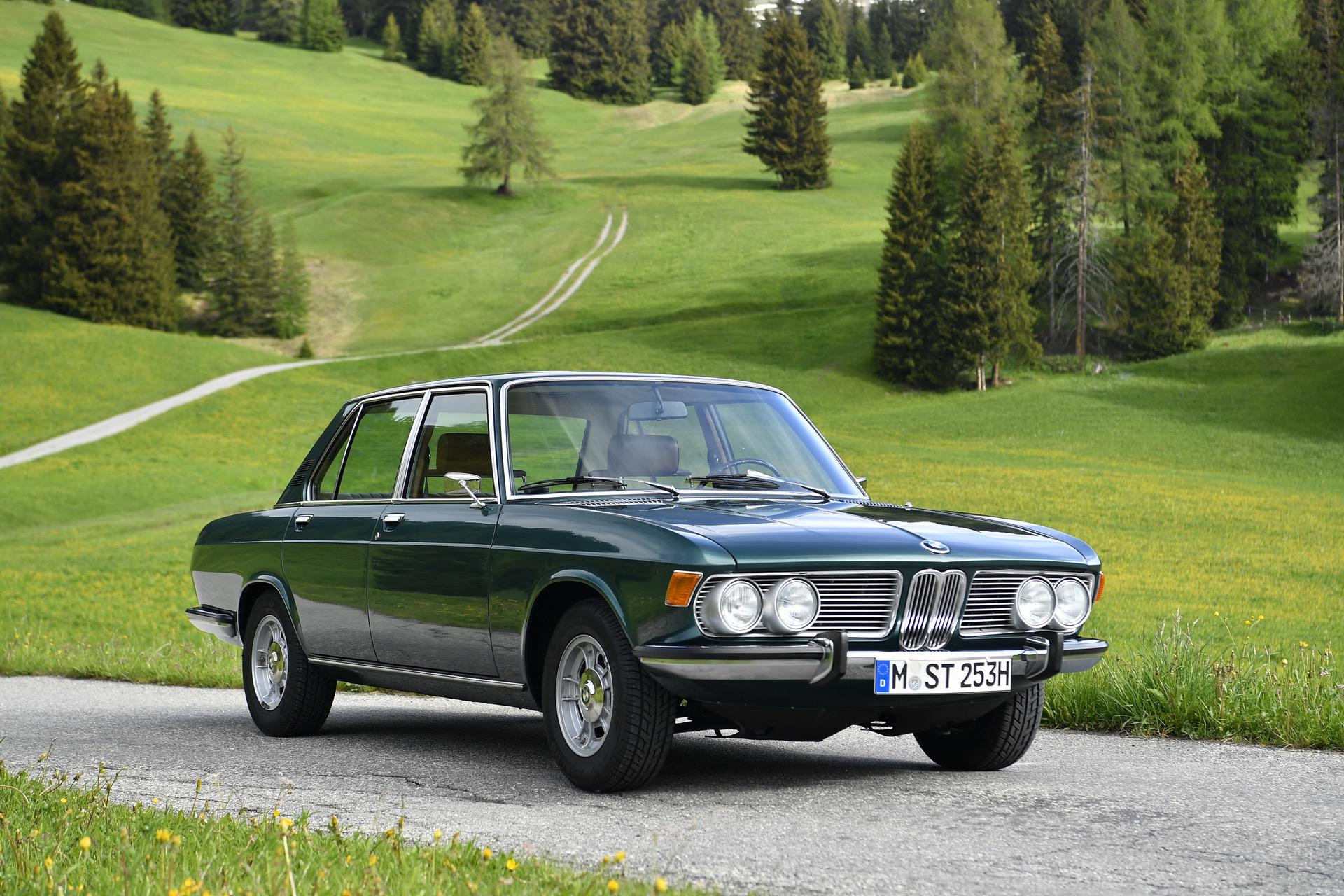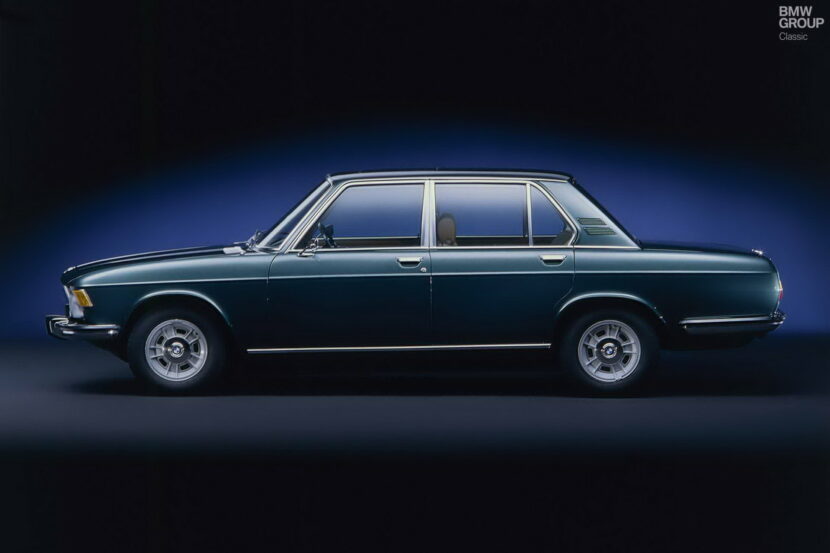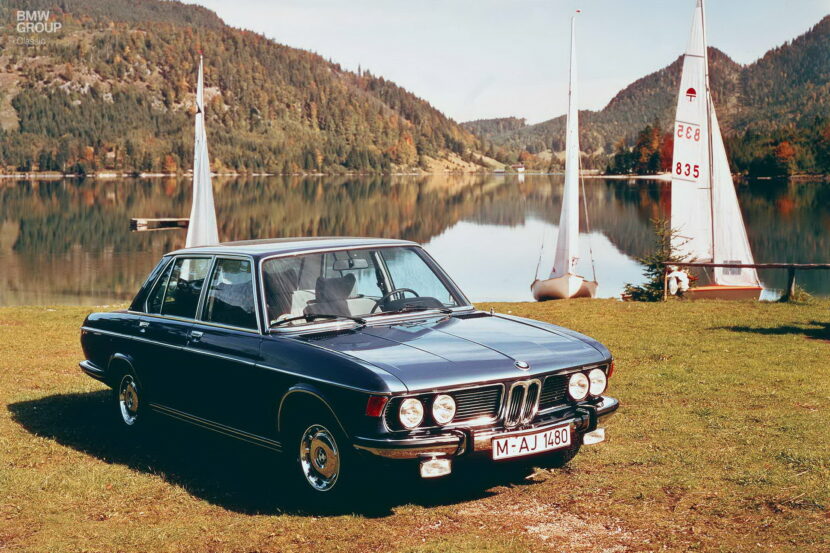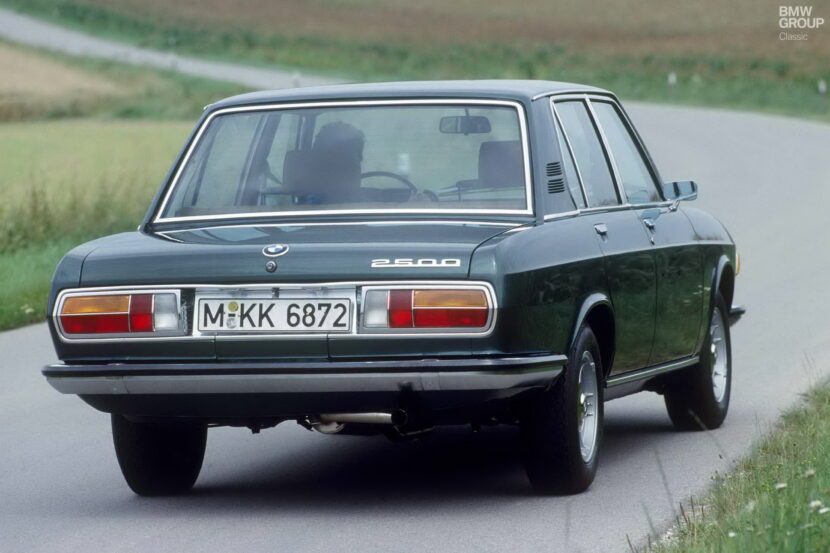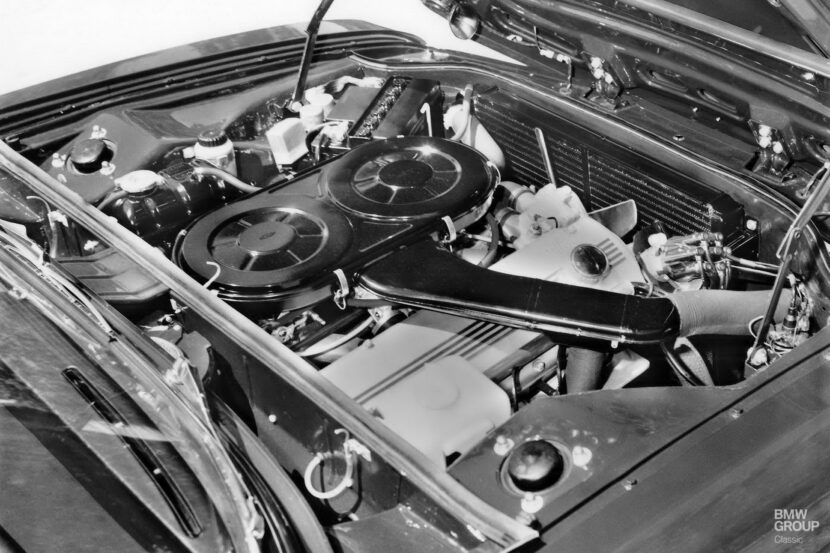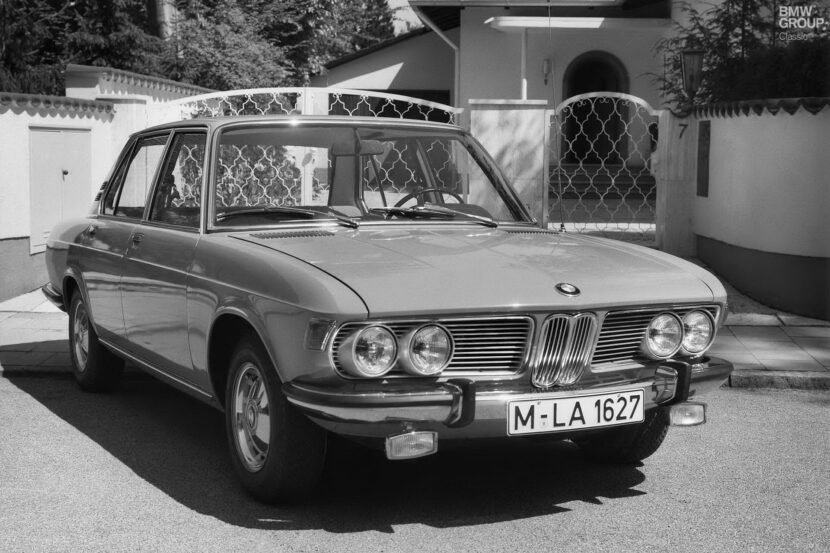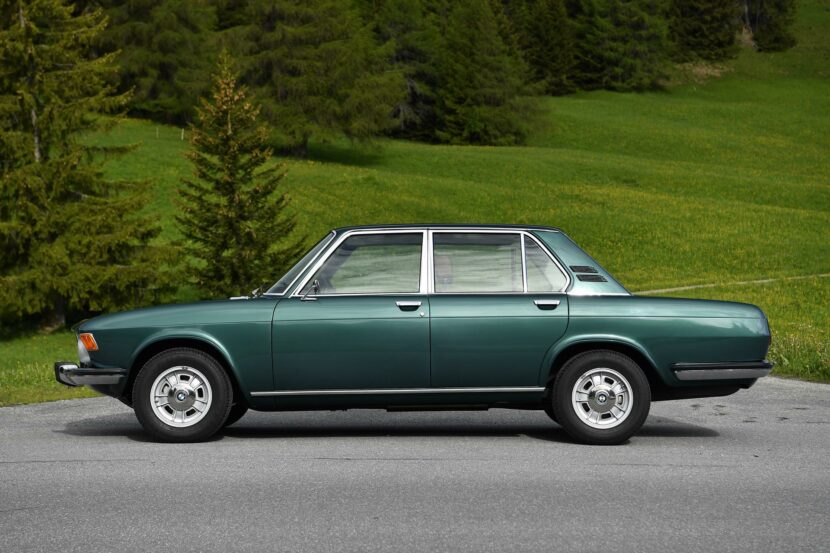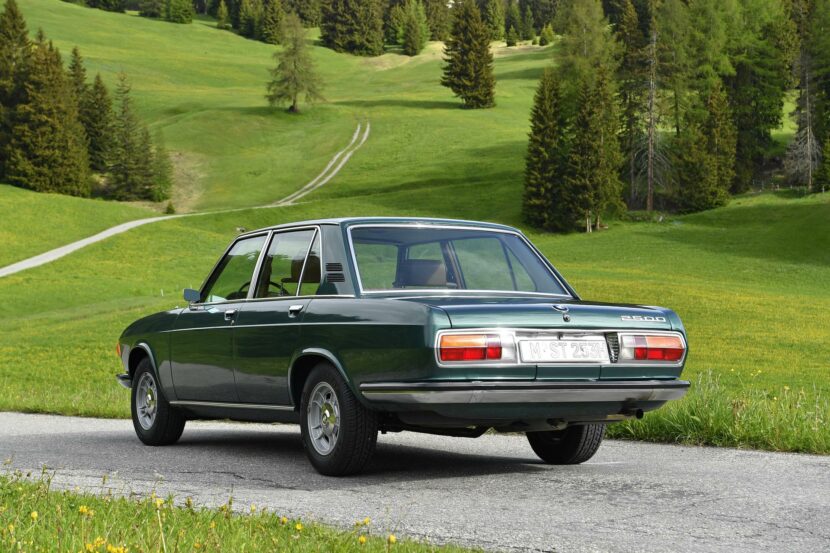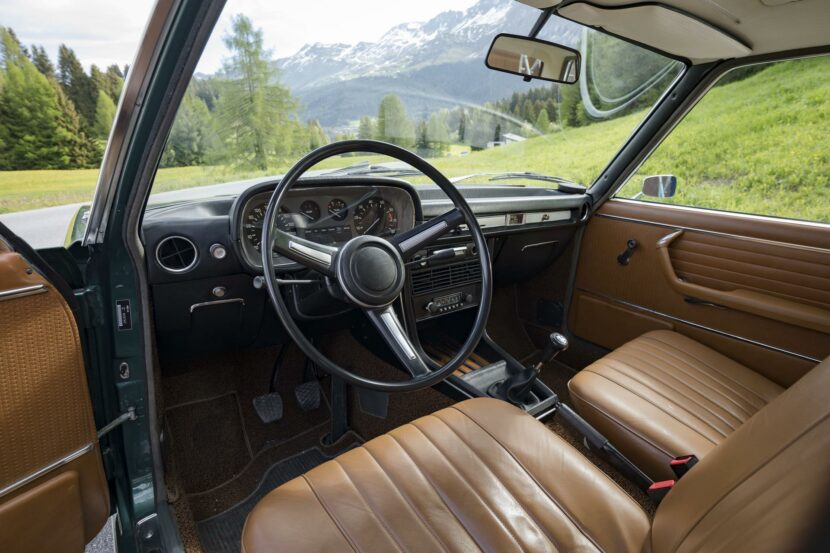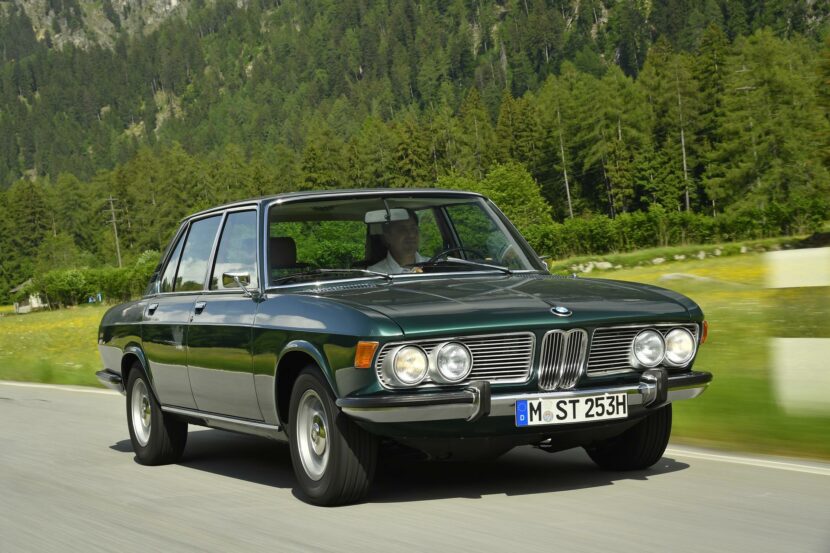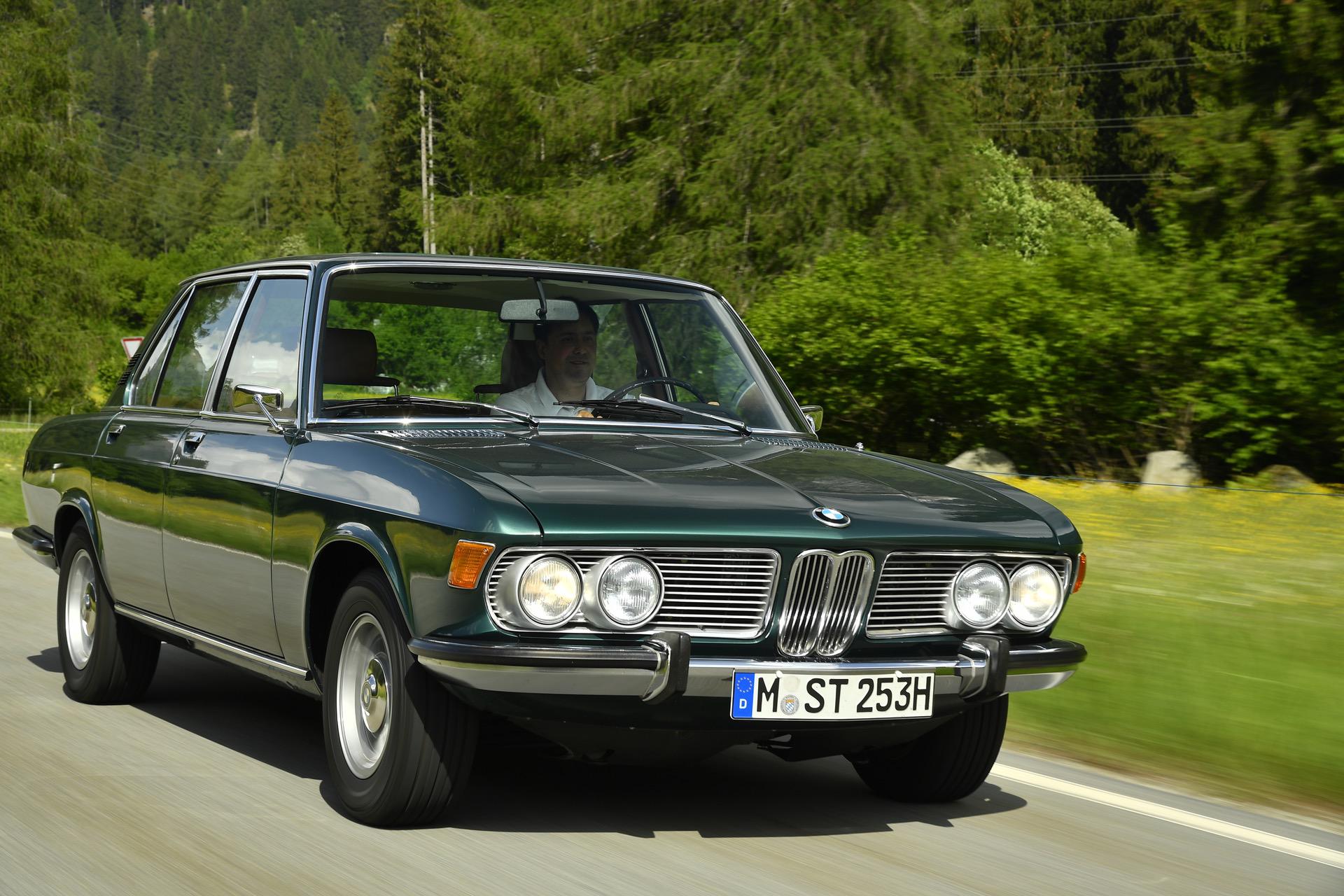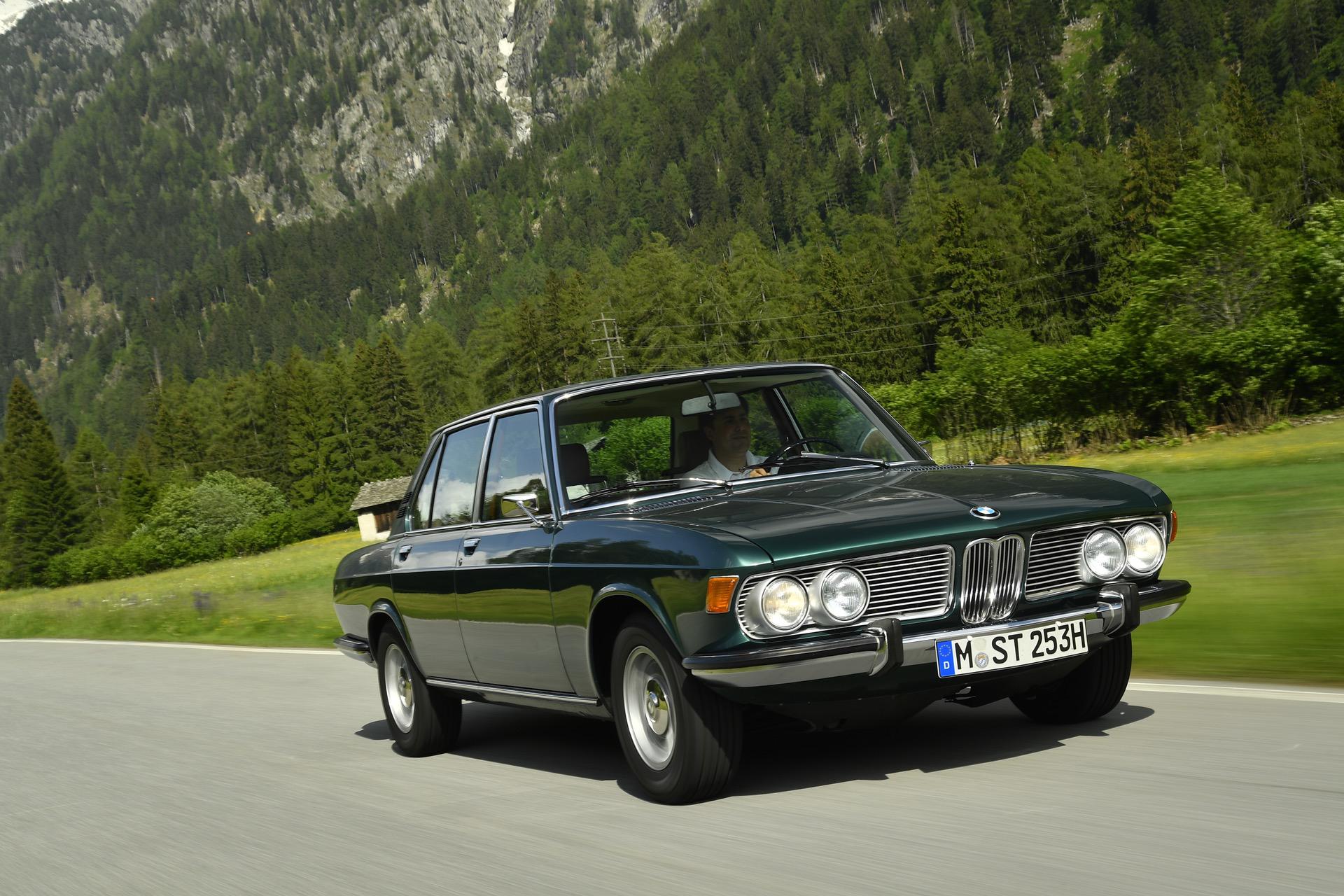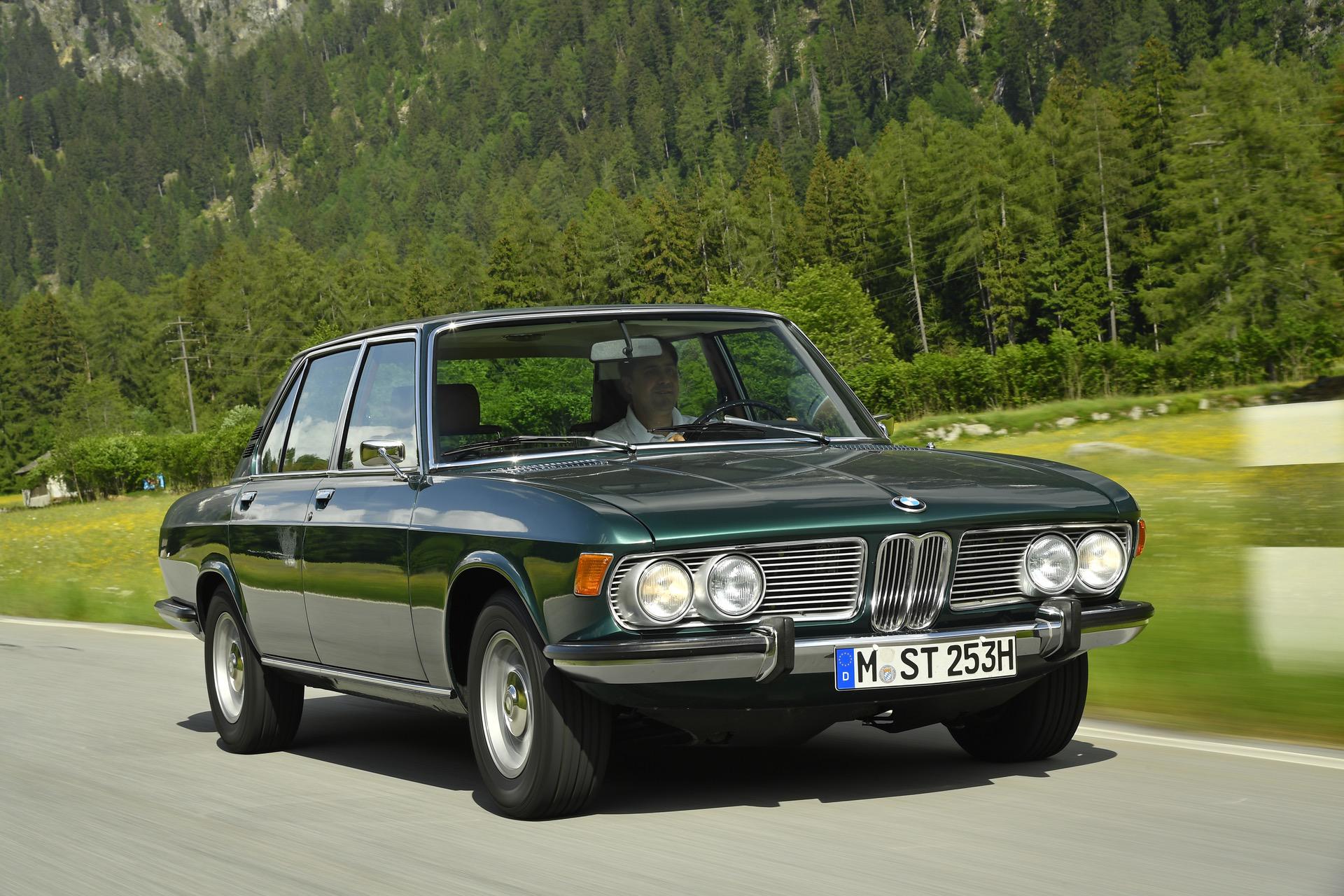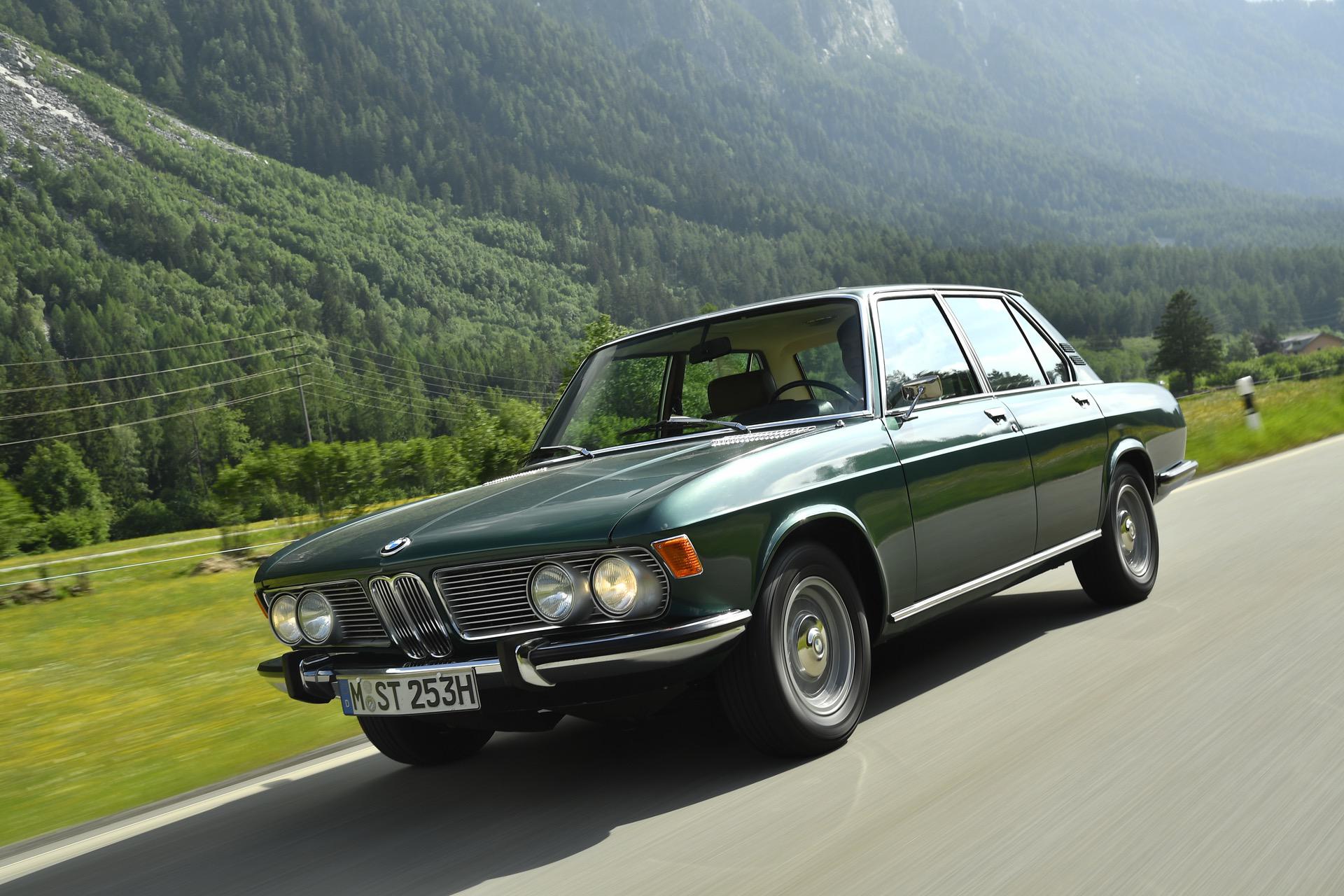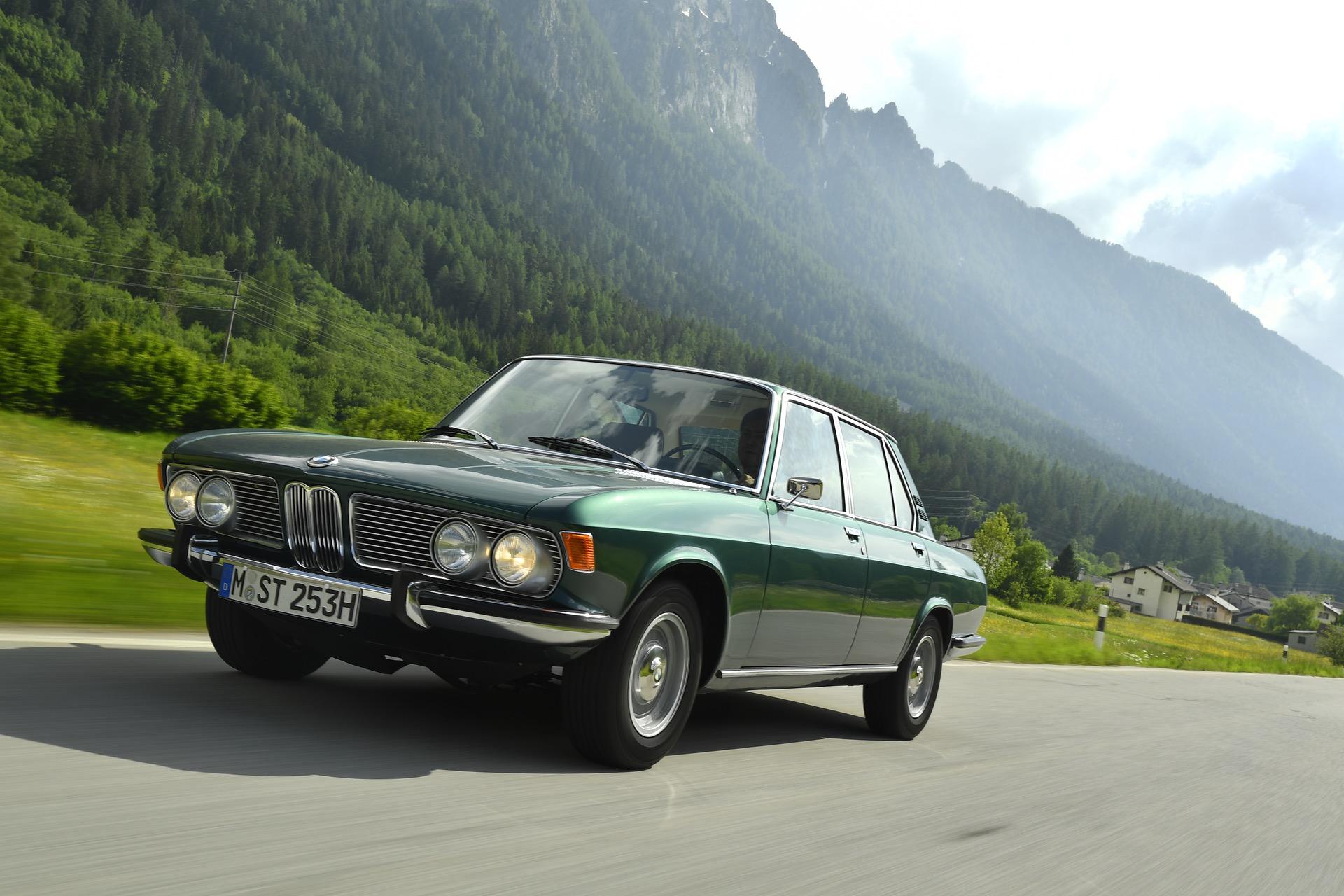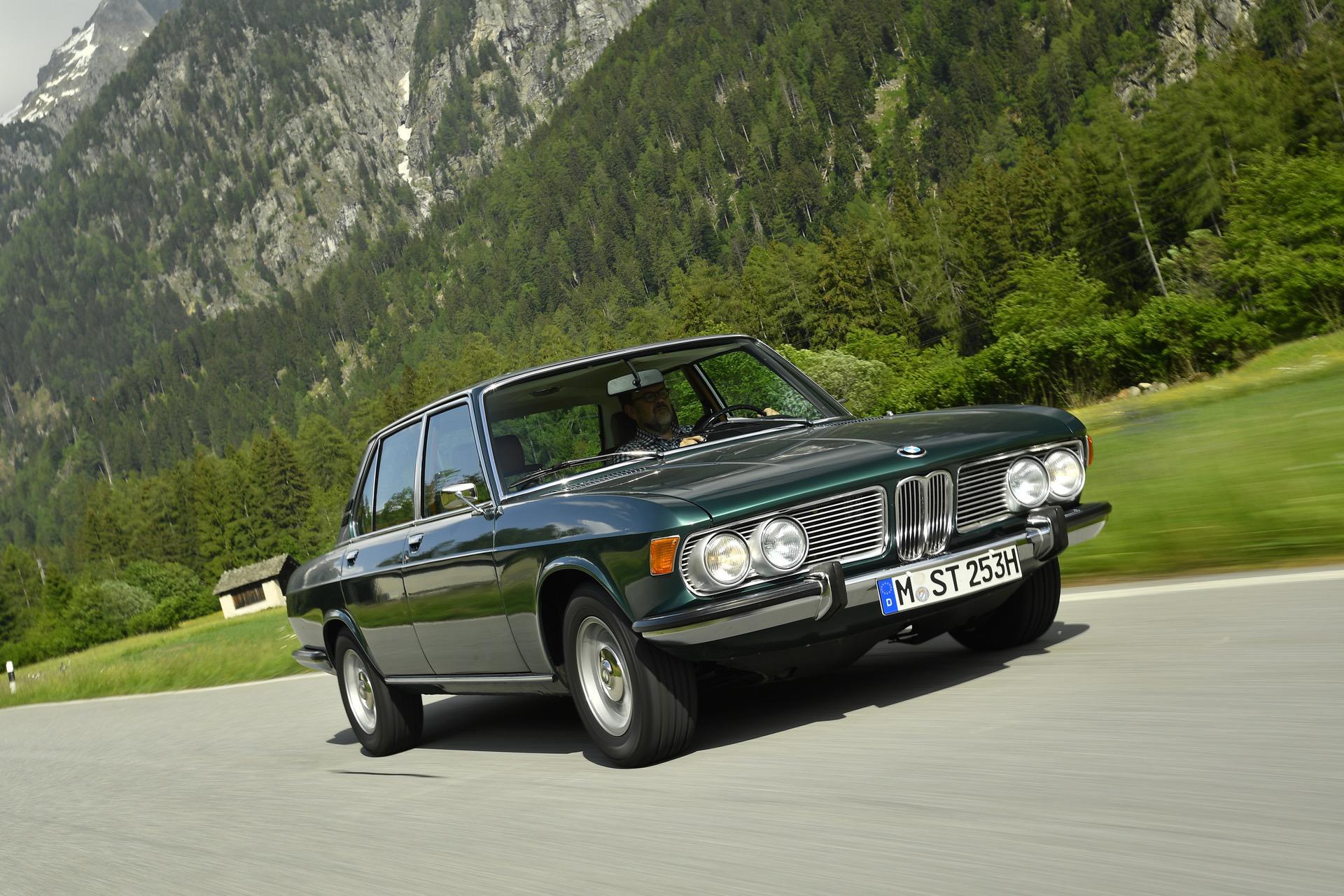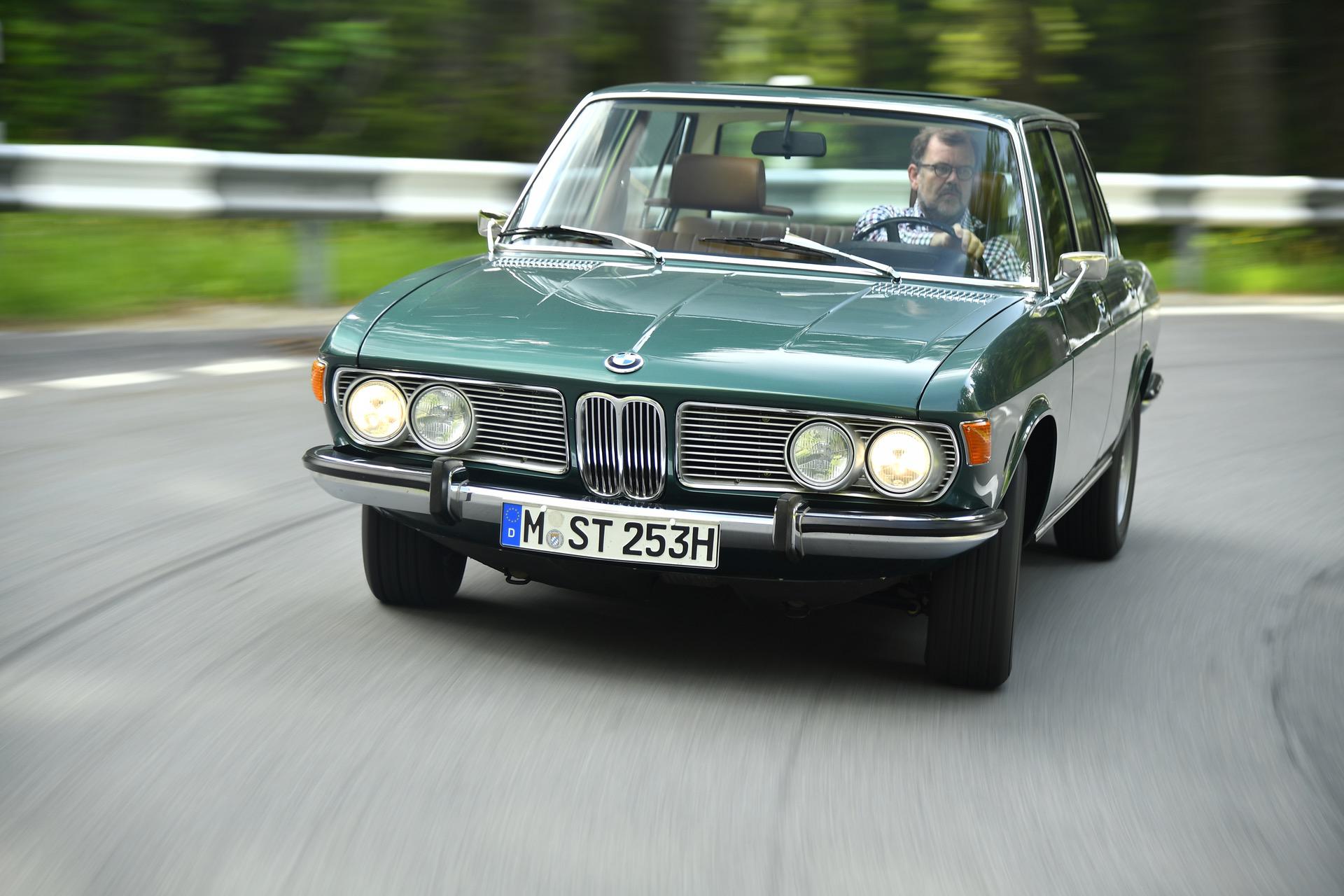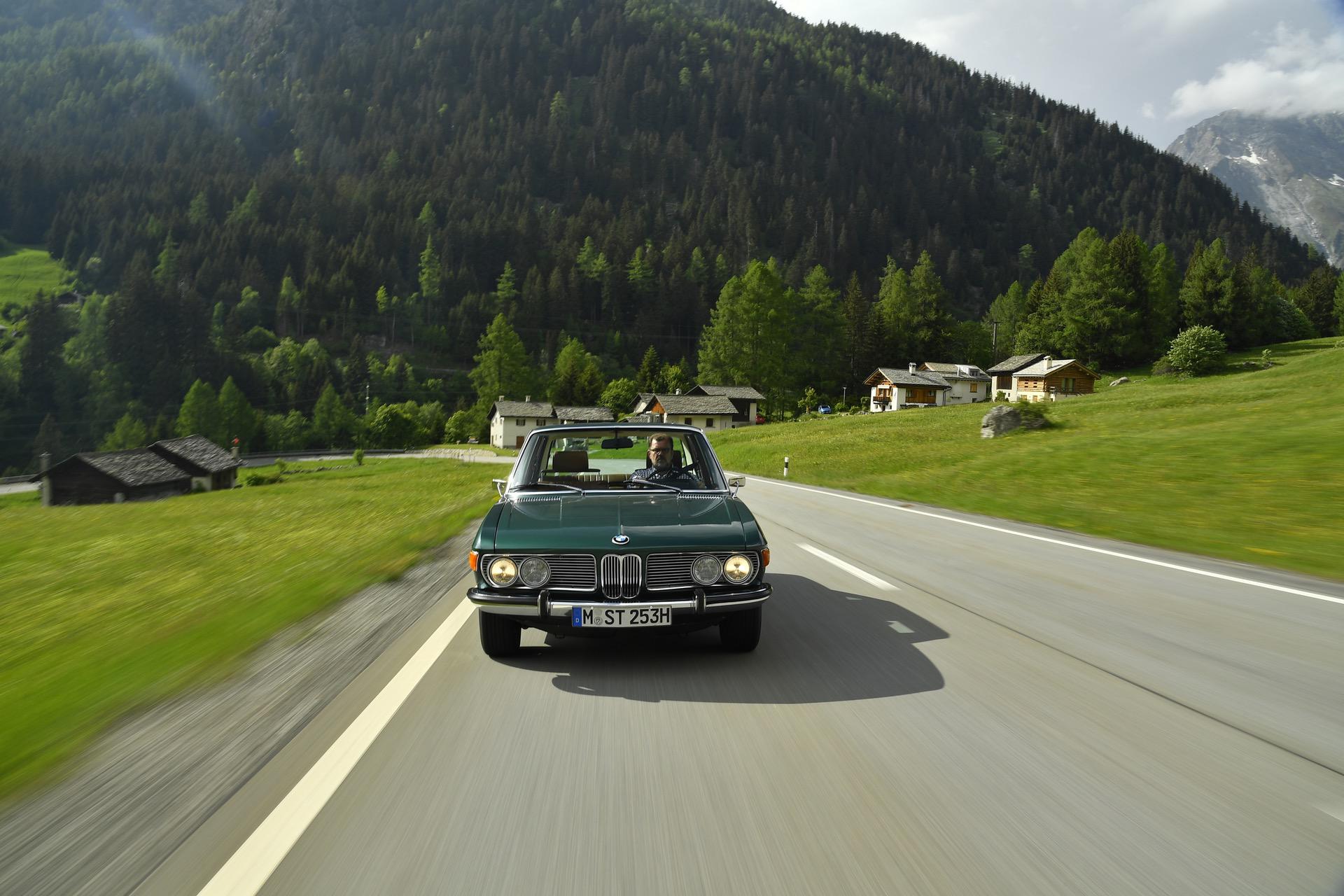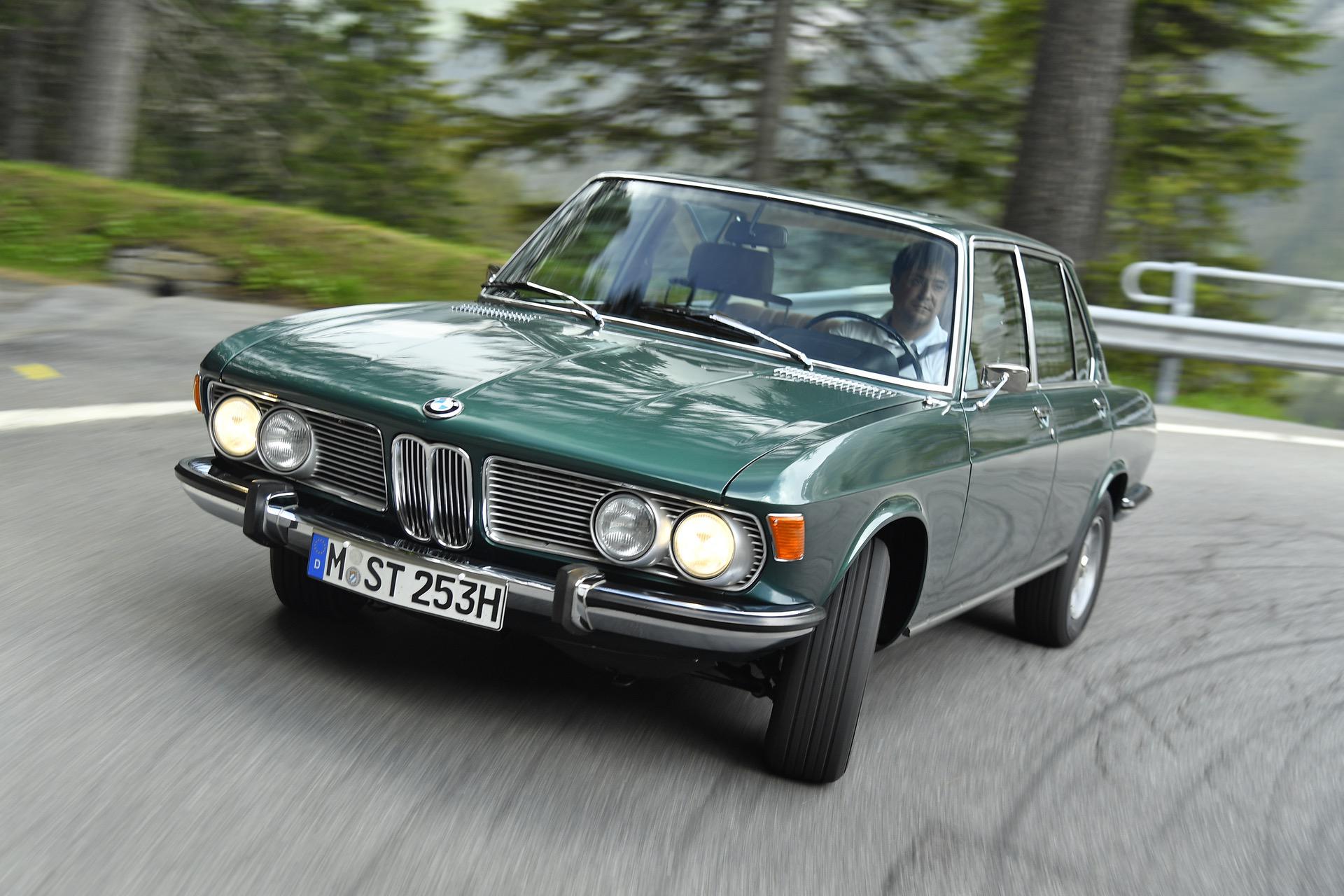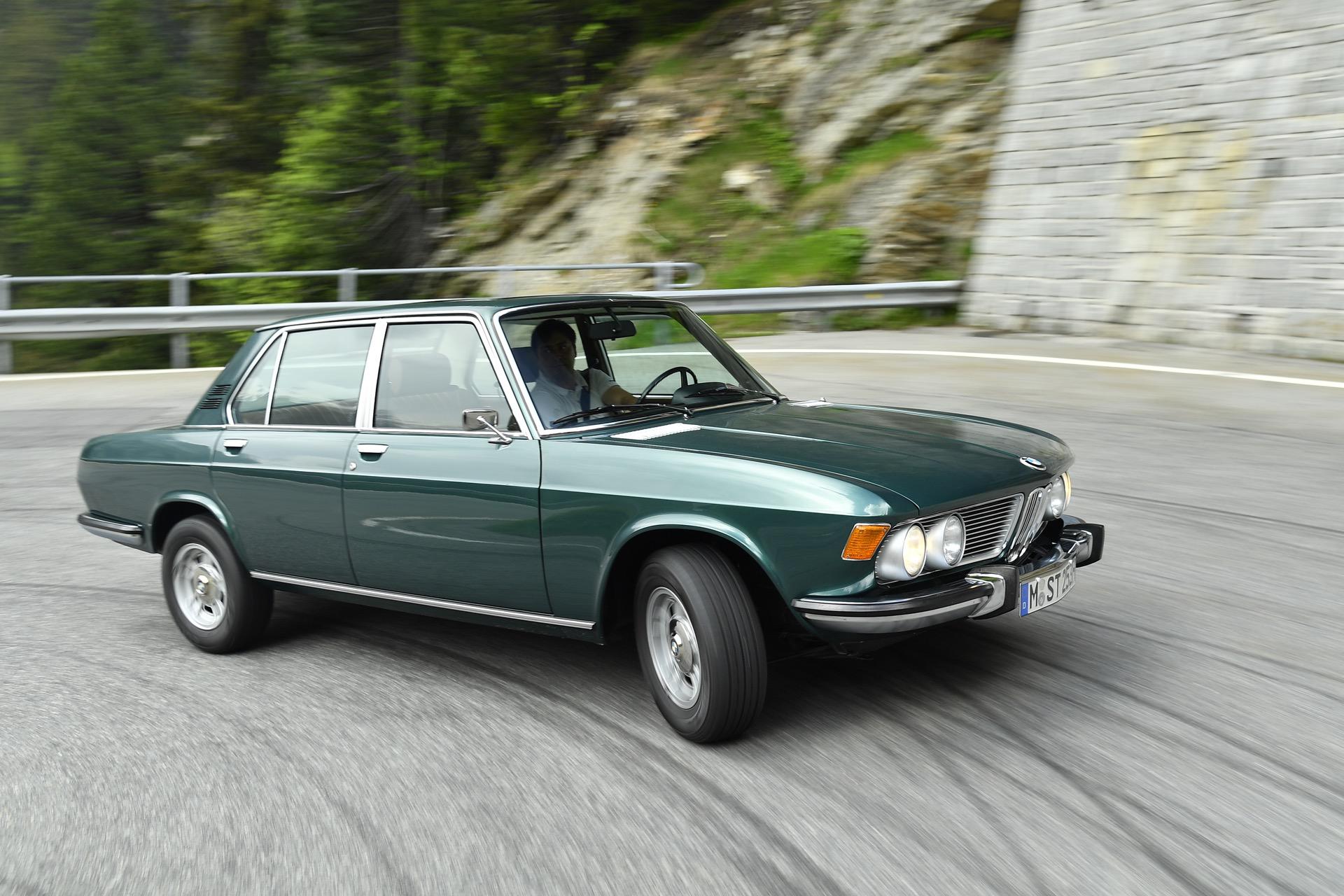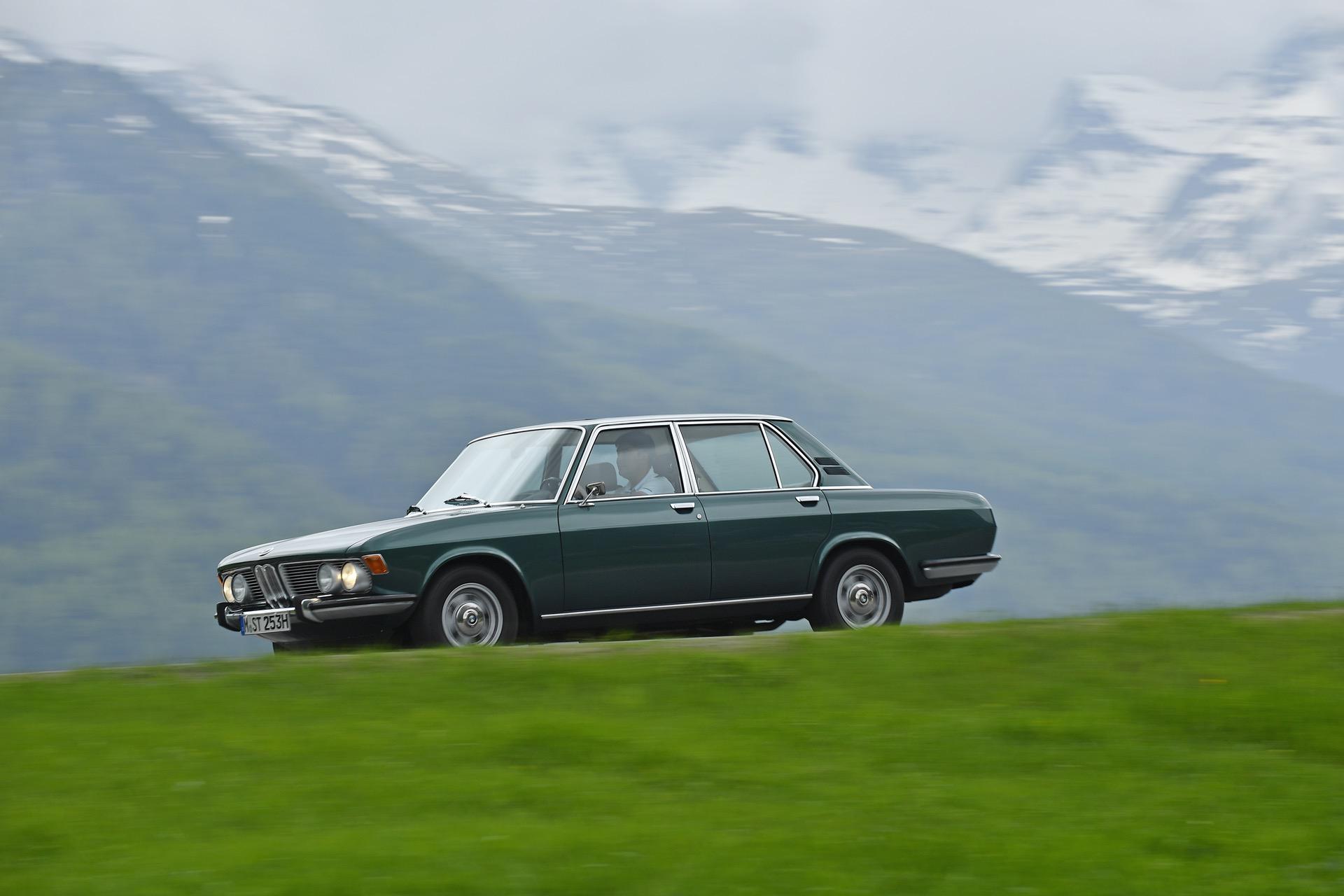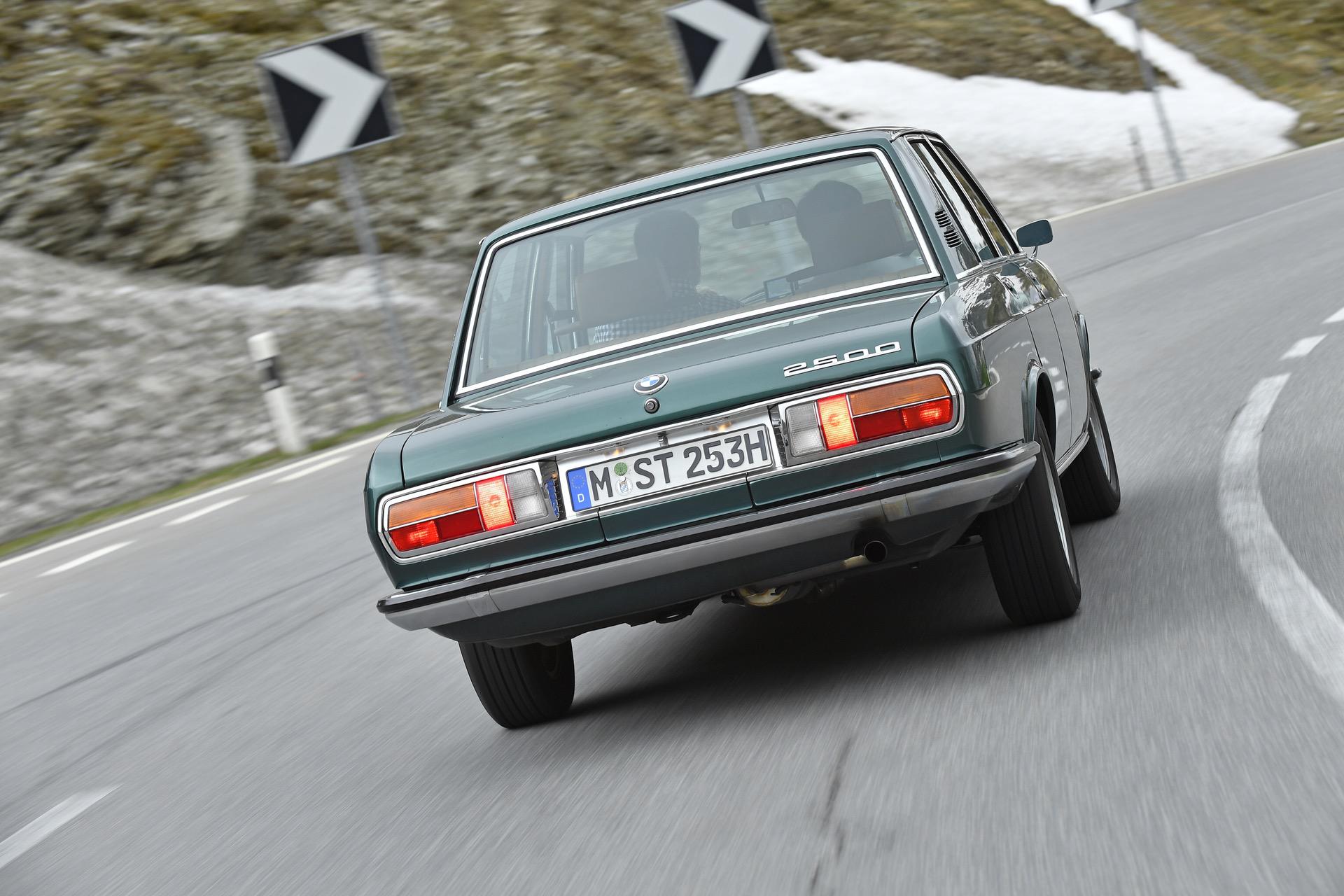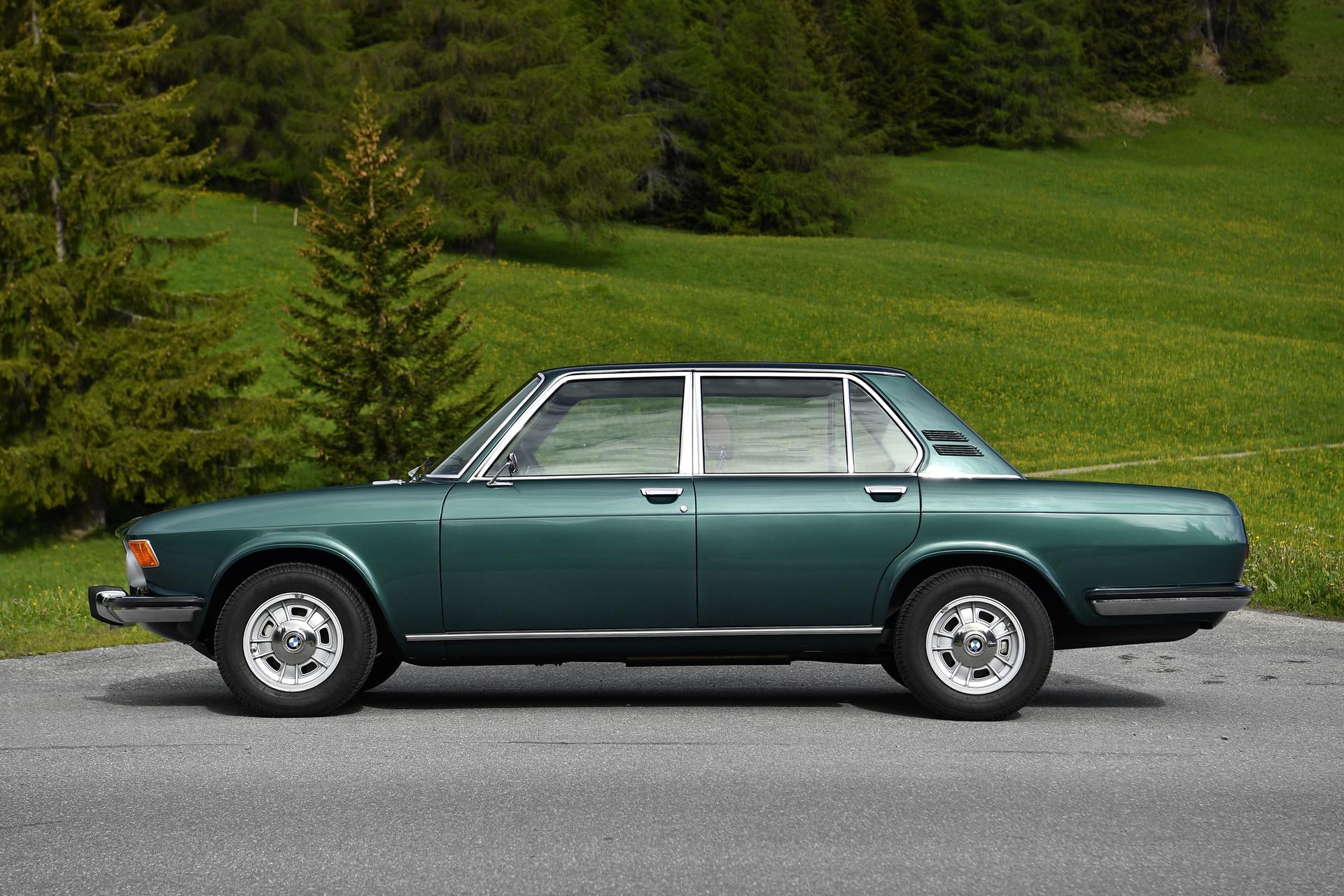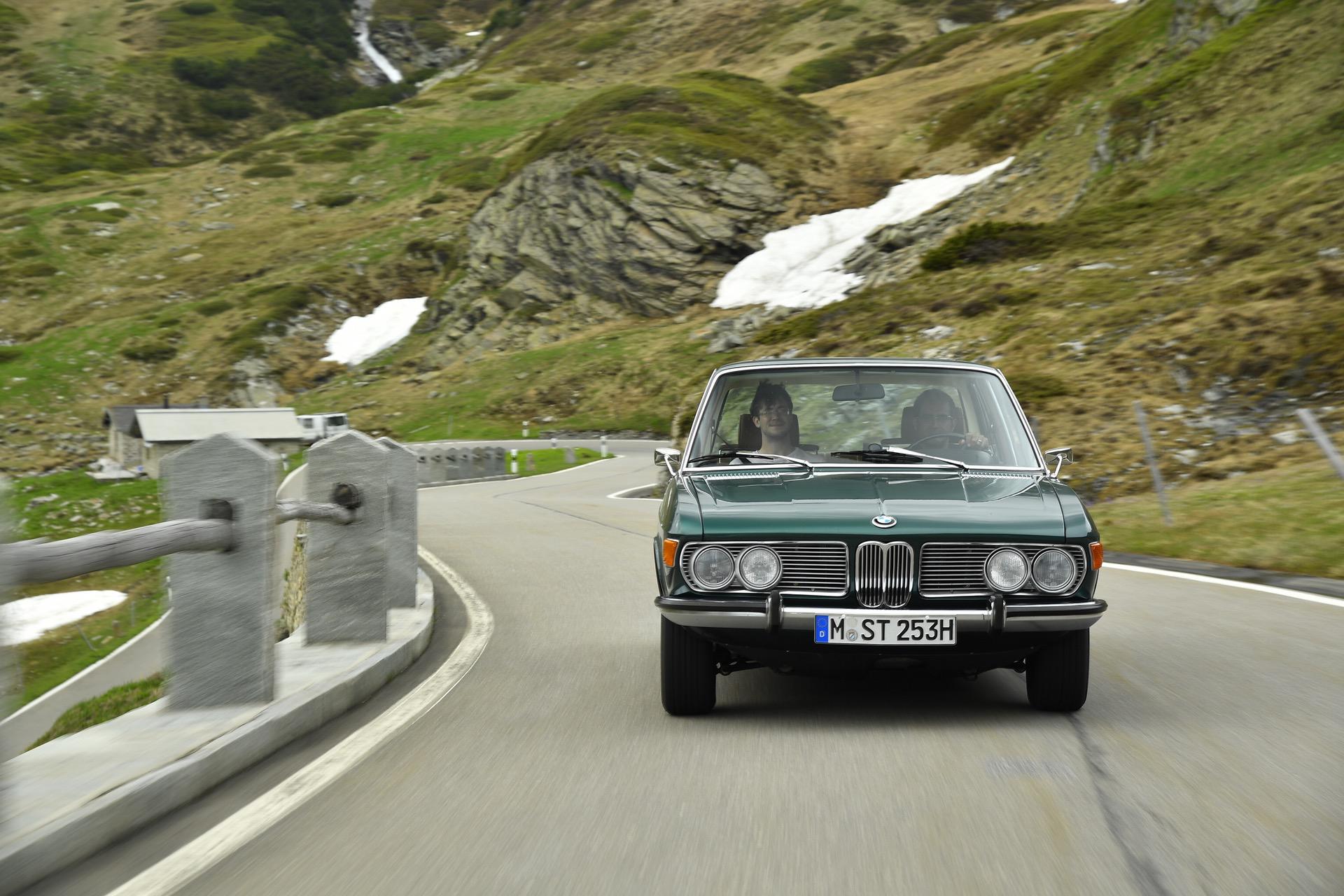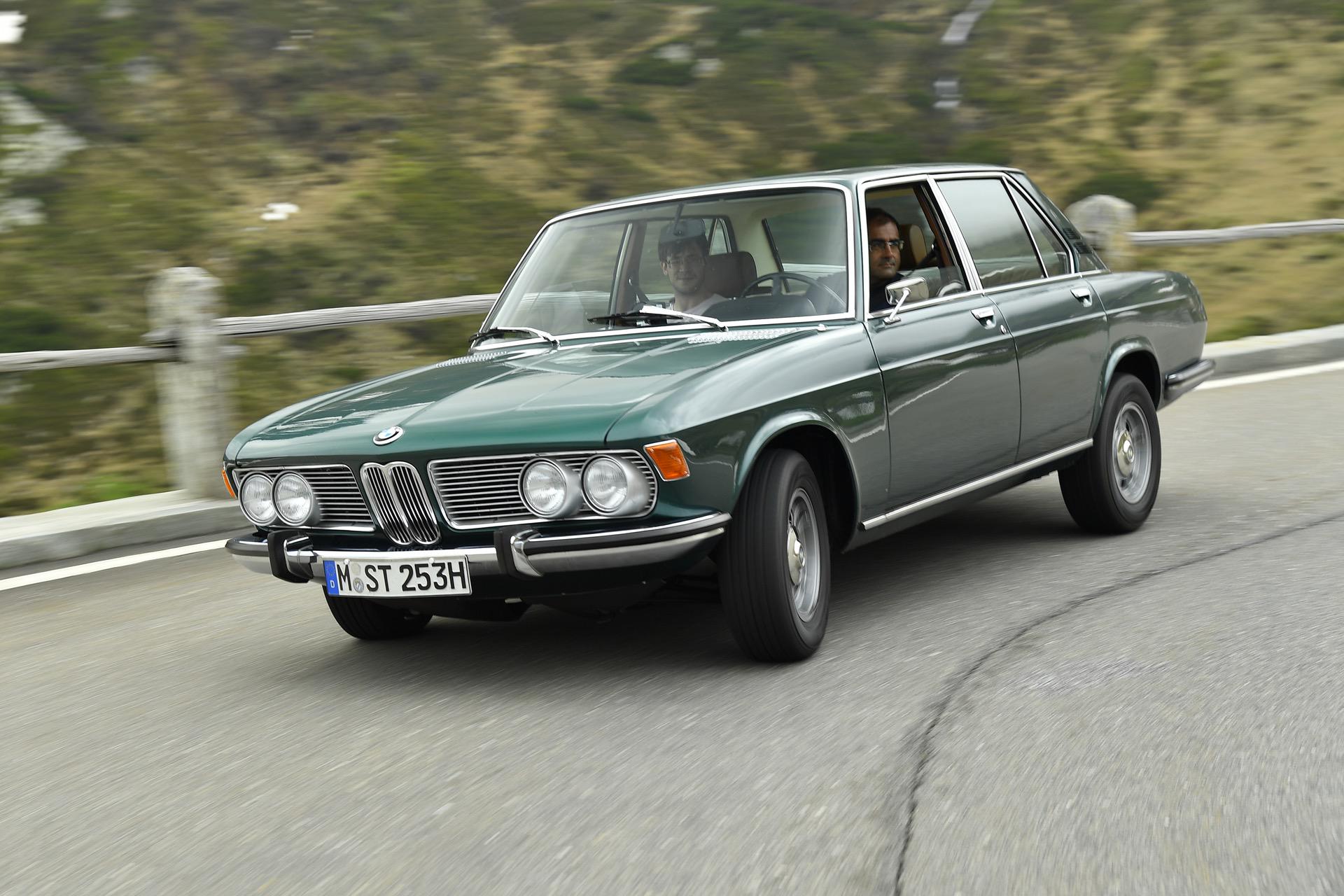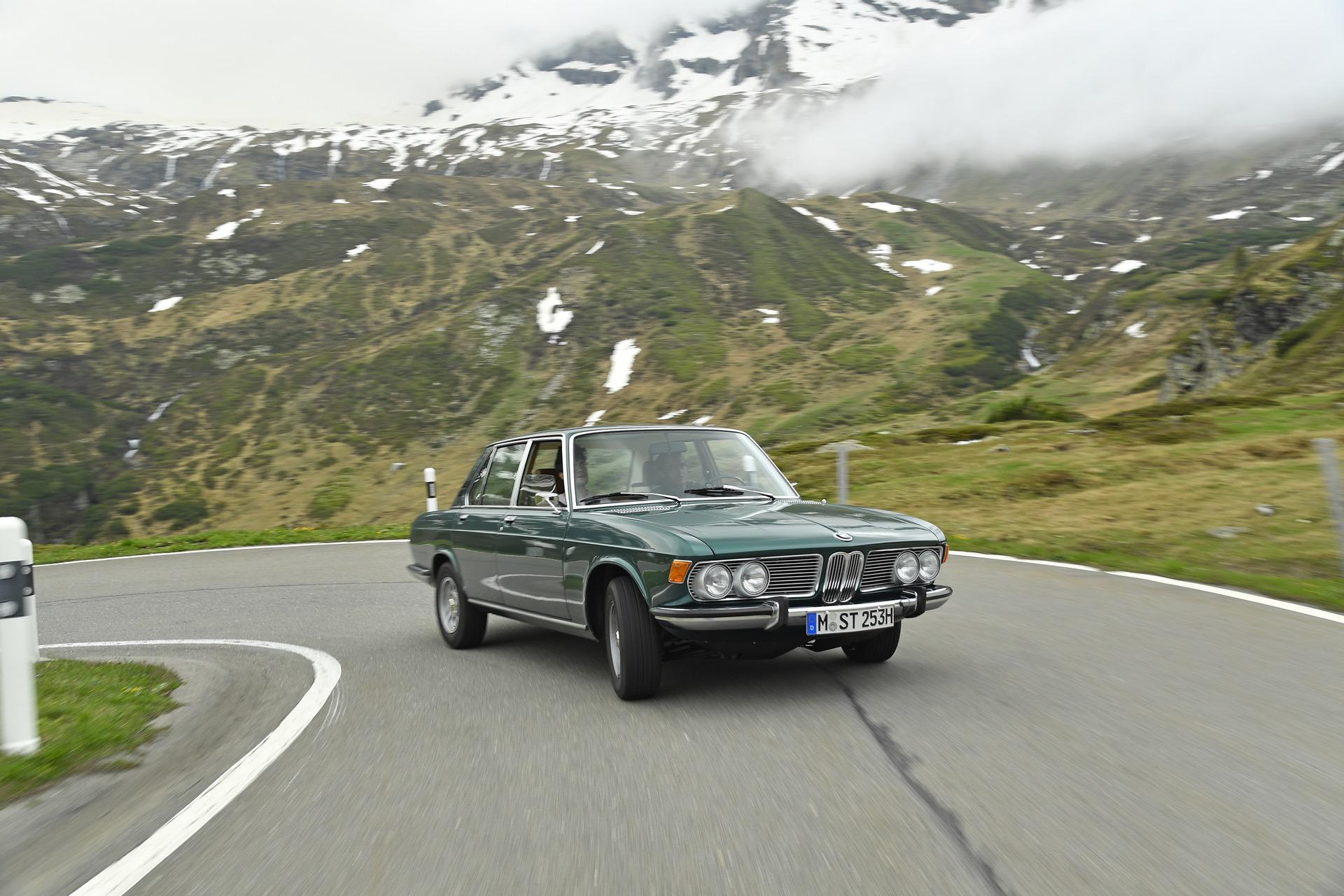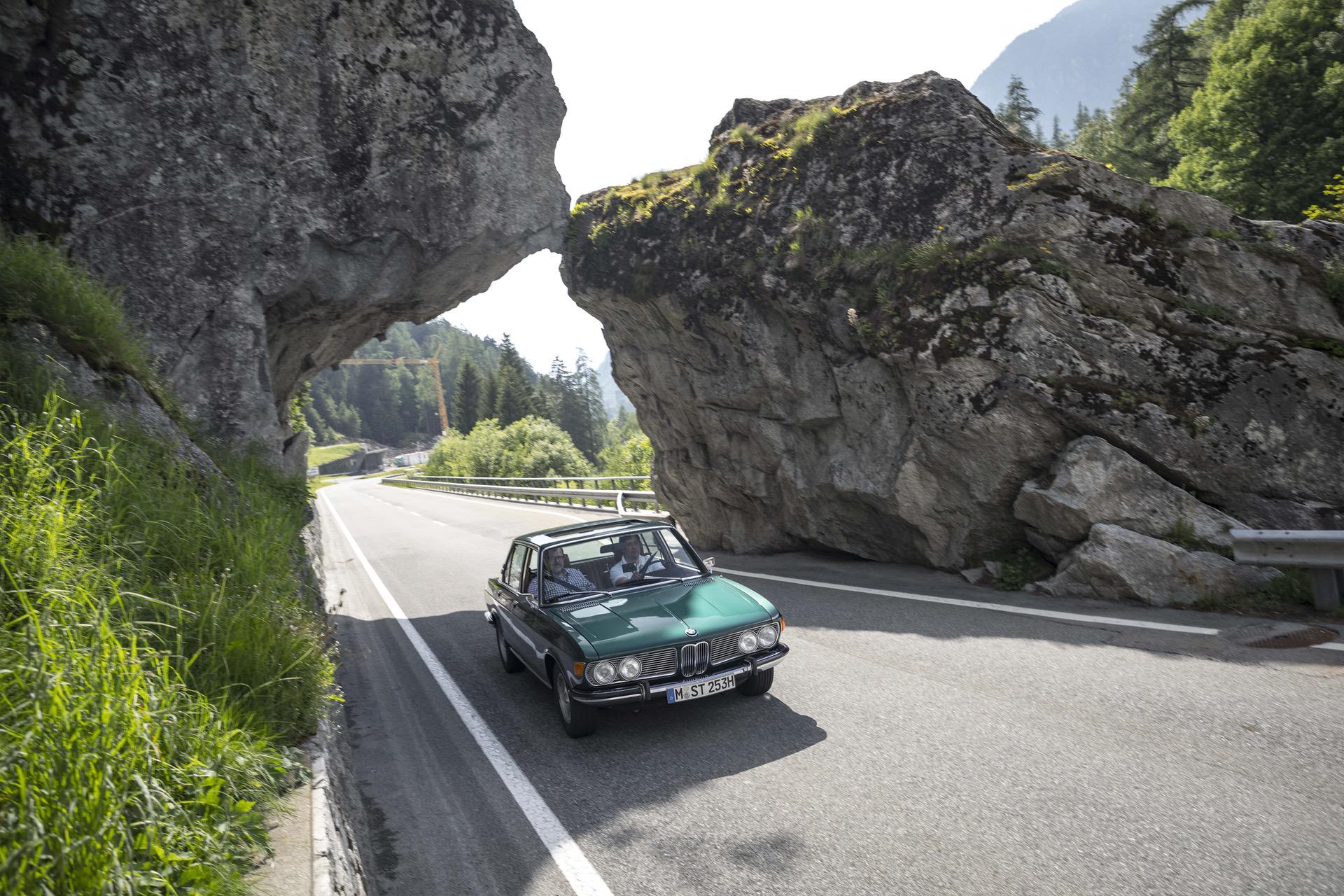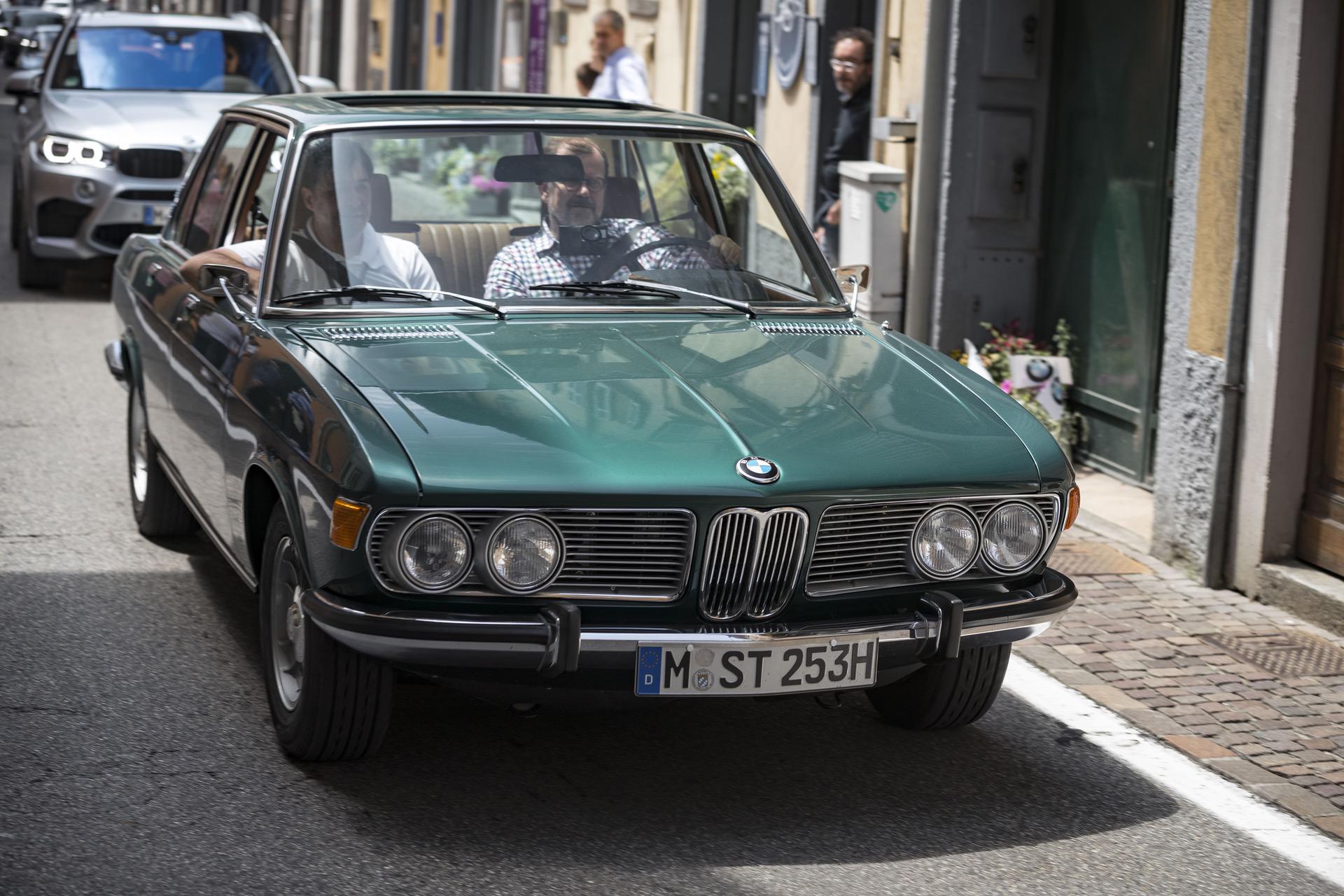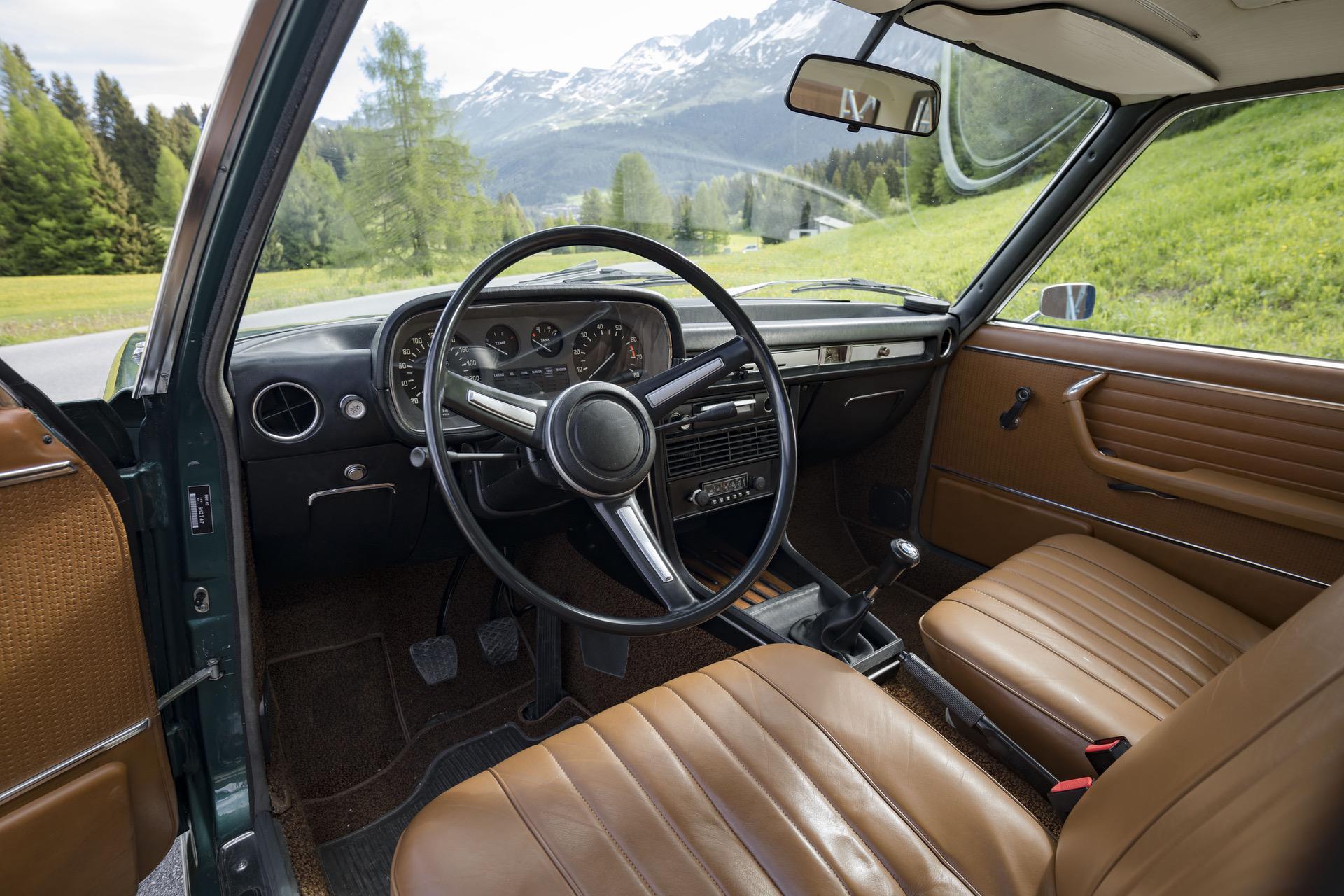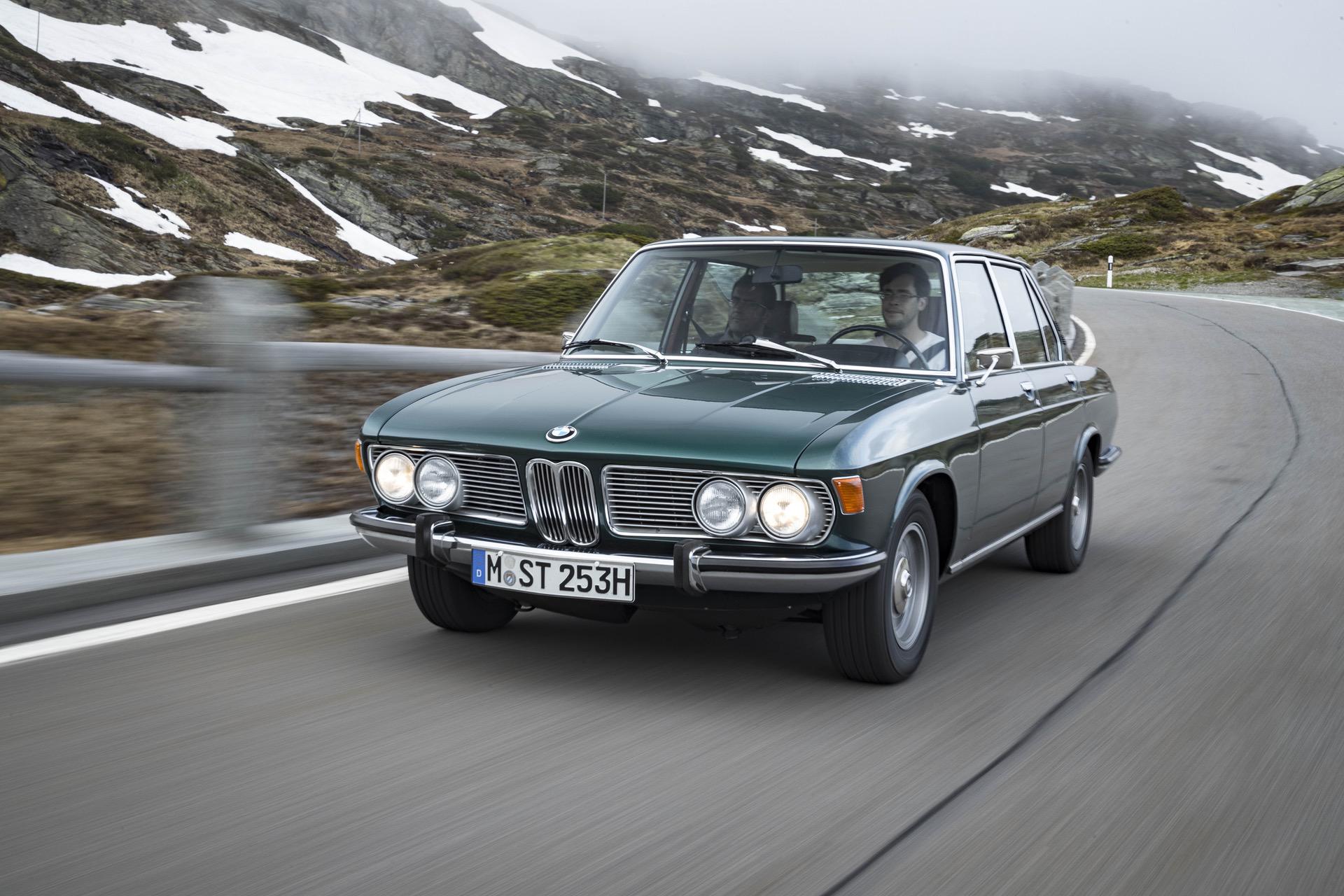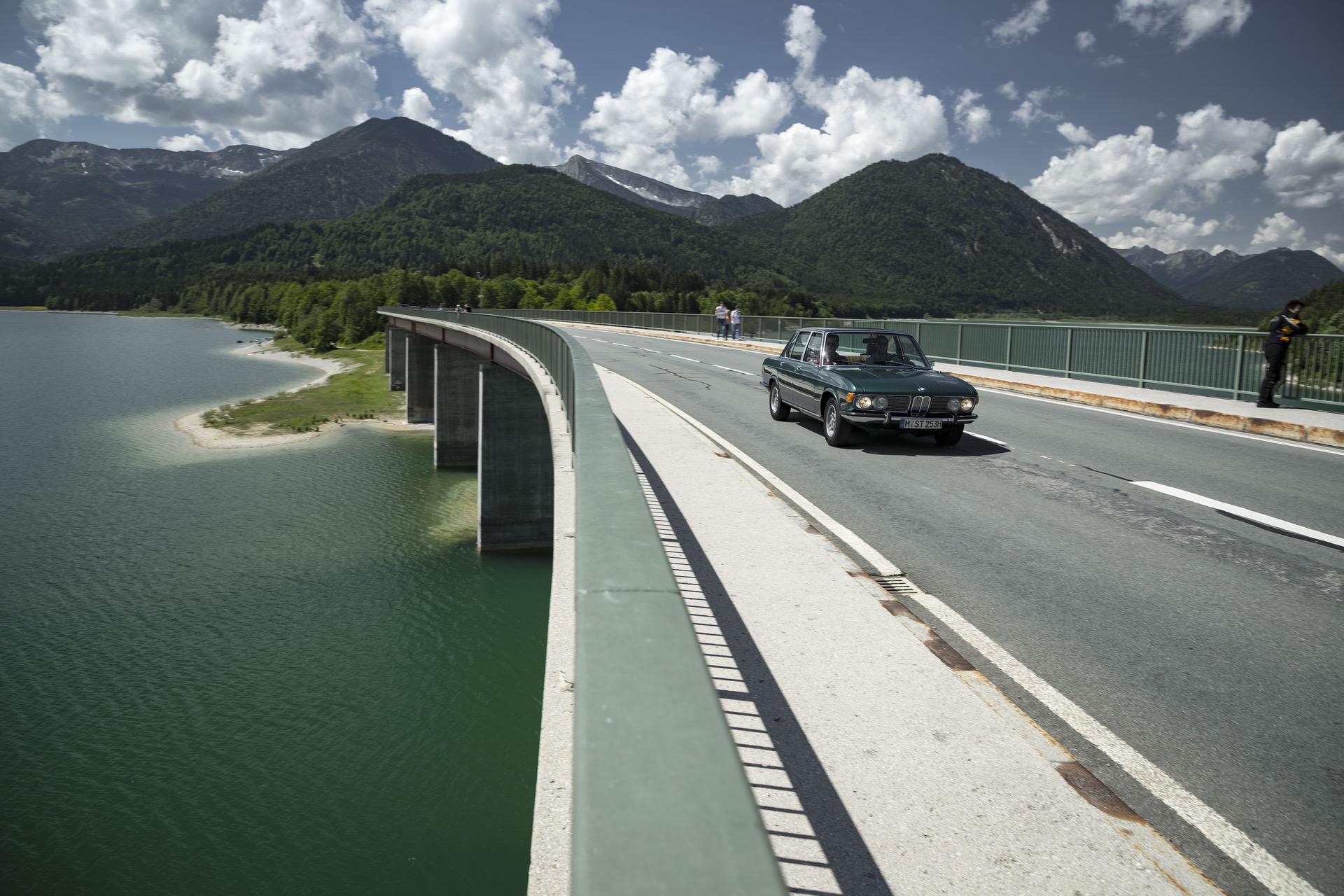With its arrival in 1968 under the BMW New Six wave of models, the entry-level 2500 version of the E3 series reaffirmed BMW’s interest and commitment to developing upper-class luxury saloons.
After the BMW New Class was successfully launched in 1962, towards late ’60s, the need for a large-sized premium sedan at BMW became more and more stringent. Since Mercedes-Benz was already a key player in the field, the decision of BMW to come up with the E3/E9 series of new high-class contenders was the best “medicine” to counteract the all-time Stuttgart rival.
BMW 2500 (Photo from the BMW Group Classic Archives).
BMW was not entirely new in this business, having previously developed the 501 and 502 luxobarges in the early ’50s. Yet, here we are talking about radically different times and the applied strategy was, as well, new. Like the BMW New Class catered to the mid-class segment of customers, the BMW New Six and New Six CS generation of models were consistently innovative in all aspects and a complete departure from the pre-crisis ancestors.
BMW 2500 (Photo from the BMW Group Classic Archives).
As their name signals, the new models under the E3 and E9 series featured solely straight-six powerplants. The E3 code denoted the sedan versions, whereas the E9 code stood for the coupe variants, also carrying the CS (Club Sport) particle in their naming scheme.
The timelessly elegant design of the E3/E9 series was penned by the equally famous Wilhelm Hofmeister, in charge of the BMW styling department until 1970 when Paul Bracq took the helm.
BMW 2500 (Photo from the BMW Group Classic Archives).
After this short historical round-up, I draw my attention to the fascinating BMW 2500 luxury sedan. This was the entry-level variant of the E3 BMW New Six generation of premium saloons, costing just 15,485 DM (Deutsche marks). The 2500 sedan was powered by the then brand new, petrol-fed M30B25V straight-six engine, which featured a displacement of 2.5 liters or exactly 2,494 cc and developed a peak output of 110 kW / 150 PS (148 hp).
The M30 generation of I6 engines was premiered with the BMW New Six family of cars in 1968 and remained in production until 1994, making it the longest produced BMW powerplant of all times. Under multiple development and enhancement versions, the M30 had many applications within the model lineup, starting with the E3 and E9, going through the E12, E23, E24 and E28 and ending up with E34.
The M30 engine of the BMW 2500 (Photo from the BMW Group Classic Archives).
On the BMW 2500 sedan, the M30 unit is equipped with dual Solex Zenith 35/40 INAT carburetors. The engine has a compression has a compression ratio of 9.0:1. The cylinder bore reaches 86 mm (3.39 in), while the stroke hits 86 mm × 71.6 mm (3.39 in × 2.82 in). The “V” letter in the engine code speaks for itself, denoting “Vergaser”, which stands for carburetor in German.
With its M30 straight-six powerplant, the BMW 2500 set a new standard in class at the time of reveal of 1968. The journalists from the German auto motor und sport automotive publication praised the qualities and performance of the new BMW engine, which they concluded were fairly close to those full-blooded sports cars.
BMW 2500 (Photo from the BMW Group Classic Archives).
They wrote as follows: “This engine is a great success and provides the best platform we can imagine for the sales success of the new car.”. The BMW 2500 had a top speed of 195 km/h (121 mph) and managed to accelerate from standstill to 100 km/h in just 8.9 seconds, which was quite an impressive achievement in that era.
In addition to being a great car to drive in true BMW philosophy, which instantly convert it into the trendsetter of its class, the BMW 2500 was above all an exquisite premium saloon with a remarkable build quality and travel comfort, oozing a sense of solidity and force.
What impressed me most when I first saw the BMW 2500 was its purely athletic stance, characterized by the svelte, straight side boatline, the crisp silhouette proportions and the sheer, tasteful elegance of the embodied styling philosophy.
The exterior design had been further refined for the E3 series and now incorporated the new BMW brand identity. The four eyes of the fascia, the signature kidney grille, the shark nose, the Hofmeister kink and the overall majestic look were all very familiar and made the car instantly recognizable as a BMW.
The cabin of the BMW 2500, as you’ll be able to see in the gallery occasioned by this article, is a complex combination between a concentrated touch of luxury and a well-dosed level of sportiness, in pure BMW style. The Tundra Green metallic color of the exterior mates perfectly with the brown leather upholstery which dresses up the seats and door covers.
The dashboard architecture of the BMW 2500 is simple, functional and intuitive, enabling an effective user operation. The attention is clearly focused towards the instrument cluster with its large-sized, analogue clocks, helping the driver get all the relevant information.
To put it straight, luxury was no longer a Merc affair only. The new BMW 2500 managed to raise the bar and set the highest standards in the upper-class segment. For many, the E3 has been a pioneer to all modern BMW luxury saloons, further helping the Bavarian constructor to establish and solidify its status as a respected, trendsetting premium carmaker.
Let’s see more pictures of the enticing 1970-produced BMW 2500 in Tundra Green metallic in the following gallery, captured during one of Media Scenic Drives events held by BMW Group Classic. Enjoy!


